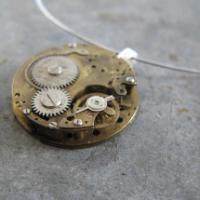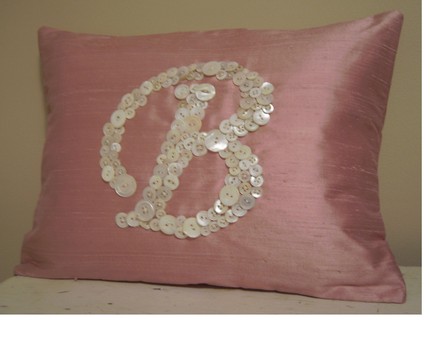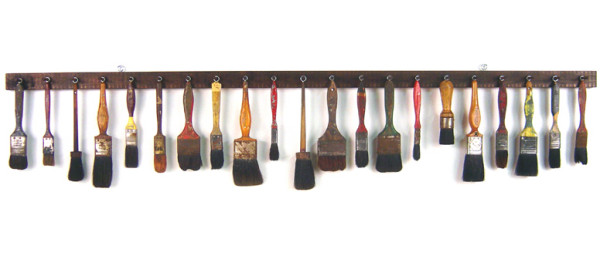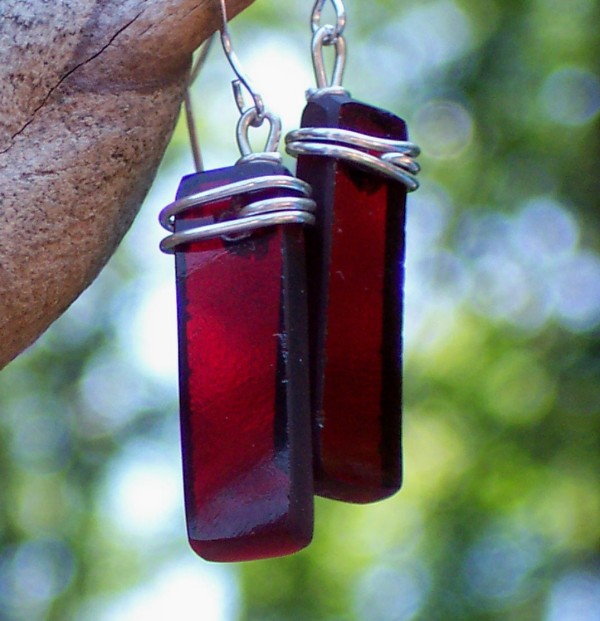 It wasn’t always that handmade quilts, the work of women who had a lot of other work to do, as well, were considered artwork in their own right. They were used, after all, and used long and hard, not set aside for posterity. If they were hung up, they were hung up to divide up living spaces or provide insulation, not set on a gallery wall. They were created not by professional artists, but by real women for real needs who used as their materials what was at hand.
It wasn’t always that handmade quilts, the work of women who had a lot of other work to do, as well, were considered artwork in their own right. They were used, after all, and used long and hard, not set aside for posterity. If they were hung up, they were hung up to divide up living spaces or provide insulation, not set on a gallery wall. They were created not by professional artists, but by real women for real needs who used as their materials what was at hand.
And yet, handmade quilts are artwork. They are beautiful. And they are now often hung in museums. Here’s an online tour of some of the nicest permanent collections:
- Museum of the American Quilter’s Society, Paducah, Kentucky: Includes some documents to download on caring for or appraising antique quilts; hosts quilting competitions; and displays images of some of its collection, including its miniature quilt collection.
- San Jose Museum of Quilts and Textiles, California: Concentrates on the exhibition of art quilts and beautiful textiles, and hosts an extensive outreach program and hands-on classes for local schoolchildren.
- The Rocky Mountain Quilt Museum, Golden, Colorado: Exhibitions often focus on pioneer and Gold Rush quilts, and the museum also hosts a public-access reference library, holds numerous how-to-quilt classes for children, and is part of the Quilt Index.
- Lancaster Quilt and Textile Museum, Pennsylvania: The collection tends to concentrate on Amish quilts, and the site includes a panoramic video of the gallery and a pdf download of all student, professional development, and public programs that the museum offers.
- Quilt Museum and Gallery, York, England: Their 1718 silk coverlet is one of the first officially dated patchwork quilts.
As far as temporary collections, have you tried your local history museum? A few years ago, I lent a crib quilt my Nana made for me (polyester, of course) to the Monroe County History Center for an exhibit on quilts that they were hosting. I know it wasn’t the Smithsonian or anything, and my Nana, while a wonderful seamstress, wasn’t exactly from Gee’s Bend, but still, I think she would have been proud that one of her quilts, made with love by a very busy woman with the materials she had at hand, meant to be used long and hard by two generations, now, of baby girls, had its time hanging on the wall in a real museum, too.










As someone very interested in women’s history and crafting (typically as separate entities), this is a fascinating way to look at both that I never would have thought about. Thanks.
As someone very interested in women’s history and crafting (typically as separate entities), this is a fascinating way to look at both that I never would have thought about. Thanks.
As someone very interested in women’s history and crafting (typically as separate entities), this is a fascinating way to look at both that I never would have thought about. Thanks.
As someone very interested in women’s history and crafting (typically as separate entities), this is a fascinating way to look at both that I never would have thought about. Thanks.
My post-grad studies were all about women’s subversions–utilizing the activities accessible to them to achieve goals or participate in ways of being that were not traditionally accessible to them–so I am nothing if not tiresome on the subject.
Women creating works of art and experiencing the mindset of the artistic way through something as stereotypically mundane as sewing for their families using their families’ cast-off fabrics is such a fascinating example of this subversion.
My post-grad studies were all about women’s subversions–utilizing the activities accessible to them to achieve goals or participate in ways of being that were not traditionally accessible to them–so I am nothing if not tiresome on the subject.
Women creating works of art and experiencing the mindset of the artistic way through something as stereotypically mundane as sewing for their families using their families’ cast-off fabrics is such a fascinating example of this subversion.
My post-grad studies were all about women’s subversions–utilizing the activities accessible to them to achieve goals or participate in ways of being that were not traditionally accessible to them–so I am nothing if not tiresome on the subject.
Women creating works of art and experiencing the mindset of the artistic way through something as stereotypically mundane as sewing for their families using their families’ cast-off fabrics is such a fascinating example of this subversion.
My post-grad studies were all about women’s subversions–utilizing the activities accessible to them to achieve goals or participate in ways of being that were not traditionally accessible to them–so I am nothing if not tiresome on the subject.
Women creating works of art and experiencing the mindset of the artistic way through something as stereotypically mundane as sewing for their families using their families’ cast-off fabrics is such a fascinating example of this subversion.